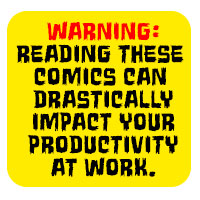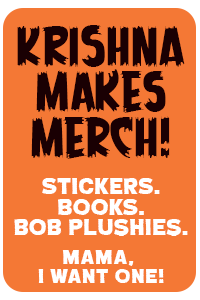How to Make an eBook for the iPad (and other tablets)
If you’re a webcartoonist who has already published a traditional book, an eBook should be next on your list. I recently converted my first book, PC Weenies: Rebootus Maximus (on sale now!), to an eBook format and I wanted to share the steps I used to create it. Hopefully it will demystify the process.
NOTE: The eBook format I’m targeting is PDF. There are other platforms and formats that you can convert your work to, but the format that’s widely accessible across both computers and tablets is PDF.

Here is the basic step-by-step process I used:
1. Determine Your Target.
Computers and tablets operate on pixels, not inches. The first thing to do is determine the screen size you want to target. The iPad has a screen resolution of 1024 x 768, and that’s basically the same screen size of most tablets (give or take).
2. Think Pixels, Not Inches
Scale down the page to fit the size. My book’s aspect ratio (the ratio of width to height), when scaled down from 9″ x 8.5″, was 1024 x 960 pixels. When viewing a 1024 x 960 image on an iPad, it will probably look great until you zoom in on the page (at which point you’ll see horribly pixelated images). You’ll want to double that size to preserve the images’ crispness. I targeted 2048 x 1960 for my final page size.
3. Use Automation Tools: They Are Your Friends.
PC Weenies: Rebootus Maximus clocks in at a whopping 120 pages. There was no way I was going to manually scale and convert files. Instead, I used Adobe Bridge (Tools > Photoshop > Image Processor) to select all the pages of the book and ran a batch script to resize each page down to 2048 x 1960, saving each page as its own JPEG file. My JPEG settings were set to ‘8’. (The maximum quality setting is ’12’.) The trade-off you’ll face is quality vs. file size. A limiting factor in my case was that I needed to make the book fit within 100MB for hosting on PulleyApp. (More on that later…)
Save the newly sized files into a separate folder. You don’t want to tamper with your originals. Once you run the Batch script, you can walk away for a few minutes while your computer processes. Or you can stare at the automation process at work. You’ll be iterating this process a few times, as you determine the best quality vs. file size for your book.
4. Assemble
After the computer’s done all the heavy lifting you’ll want to assemble all the JPEG files into one PDF. The easiest way to do this (if you have a Mac), is to use Apple’s Preview.app. (Adobe Acrobat on the Windows side should be able to do this as well.)
Select all the JPEG page files in your folder and open all of them up in Apple Preview.
Make sure you select all the images within the Preview.app (Command-A). Then go to: File > Print Selected Images:
Click the PDF button when the dialog box appears.
Choose Save as PDF:
Voila! You have an instant digital book! Rename the file and get it hosted online. I use PulleyApp as it has unlimited bandwidth for downloads. There are different pricing structures per month, depending upon the size of your digital file. I chose the basic option. What I like about PulleyApp is that it tracks the number of times the file is downloaded (and who downloaded it) and keeps the download URL secure. This is a much better alternative to putting the file on your own site without such security present.
And that’s it!
Questions? Comments? Send ’em my way and I’ll do my best to answer them. If you found this post to be useful, why not click the button below and purchase my eBook? (only 5 bucks!) :)
-Krishna







Stoney
May 31, 2011 at 8:35 pmirfanview can do the converting on windows. convert is a cli app on linux.
for combining into pdf i’m not sure what it is on either platform. Another idea to consider is compressing into a cbr or cbz which is a rar or zip with a changed extension.
Krishna
May 31, 2011 at 10:37 pmCool, thanks for the heads-up on ifanview, Stoney! Great options for everyone to check out. Thanks!
Lucas
June 1, 2011 at 3:08 pmWow! Thanks for that, Krishna!
Katie
June 1, 2011 at 8:43 pmHi Krishna,
You are always so informative!
How are you protecting digital rights this way? I was thinking about this b/c if I download a book from the library for my nook, it is in epub format and somehow that magically expires in 14 days. Books I buy online can be lent to only one other person. So I bought your book through B&N I could only lend it out to one other person and somehow the file is protected from me sending it out to 50 other folks- which is good from the author point of view.
Also, here is a thought- a while back you had a post about submitting your book to libraries. You might want to see if they might be interested in a digital version.
Keep up the good work.
:)
Katie
Krishna
June 2, 2011 at 12:23 amGood points, Katie. To be honest, I have no DRM on my eBook. I’m trusting my readers to do the right thing.
David Messer
January 13, 2012 at 4:06 amThank you! A great help!